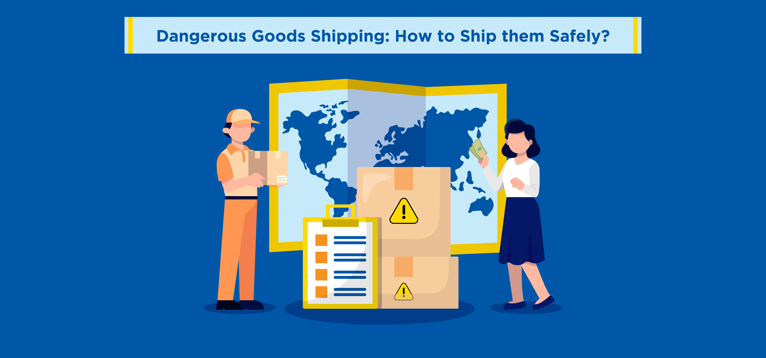Shipping dangerous goods is a difficult task that requires awareness, training, precaution, and compliance with several international laws. Yet the dangerous goods shipping industry grows by a CAGR of 6%. This article sheds light on dangerous goods, hazardous materials, and the factors that come into play when transporting them.
What are Dangerous Goods and Hazardous Materials?
Dangerous goods are items or articles that have the potential to cause significant damage to health, property or the environment. Lithium batteries in mobile phones are the most common dangerous goods examples.
On the other hand, Hazardous materials or hazmat, are substances that pose the same threat. Gasoline liquids and aerosols are examples of hazardous materials. Both of these terms can be applied to the same list of items and substances (discussed below) defined by the United Nations.
What are the Dangerous Goods Shipping Regulations?
You need to consider the relevant regulations when shipping dangerous goods or hazardous materials. These regulations depend on the type of goods and the mode of transport. Dangerous goods regulations may also change depending on the importing and exporting country.
If you are shipping dangerous goods internationally by sea, you need to adhere to the International Maritime Dangerous Goods (IMDG) Code defined by the International Maritime Organisation (IMO). On the other hand, if you are shipping hazardous materials by air, you should follow the Dangerous Goods Regulations (DGR) Manual defined by the International Air Transport Association (IATA).
Both IMDG Code and DGR Manual identify dangerous goods lists and define the guidelines for dangerous goods shipping. These guidelines include requirements for shipping dangerous goods such as packaging, training, labelling, handling, storage, and so on. They ensure that organisations that provide dangerous goods shipping services are protected from the harmful effects of these items.
The 9 Classes of Dangerous Goods & Hazardous Materials
There are 9 classes of dangerous goods and hazardous materials. While the complete list of dangerous goods is quite long, each of them falls into one or more of these classifications.
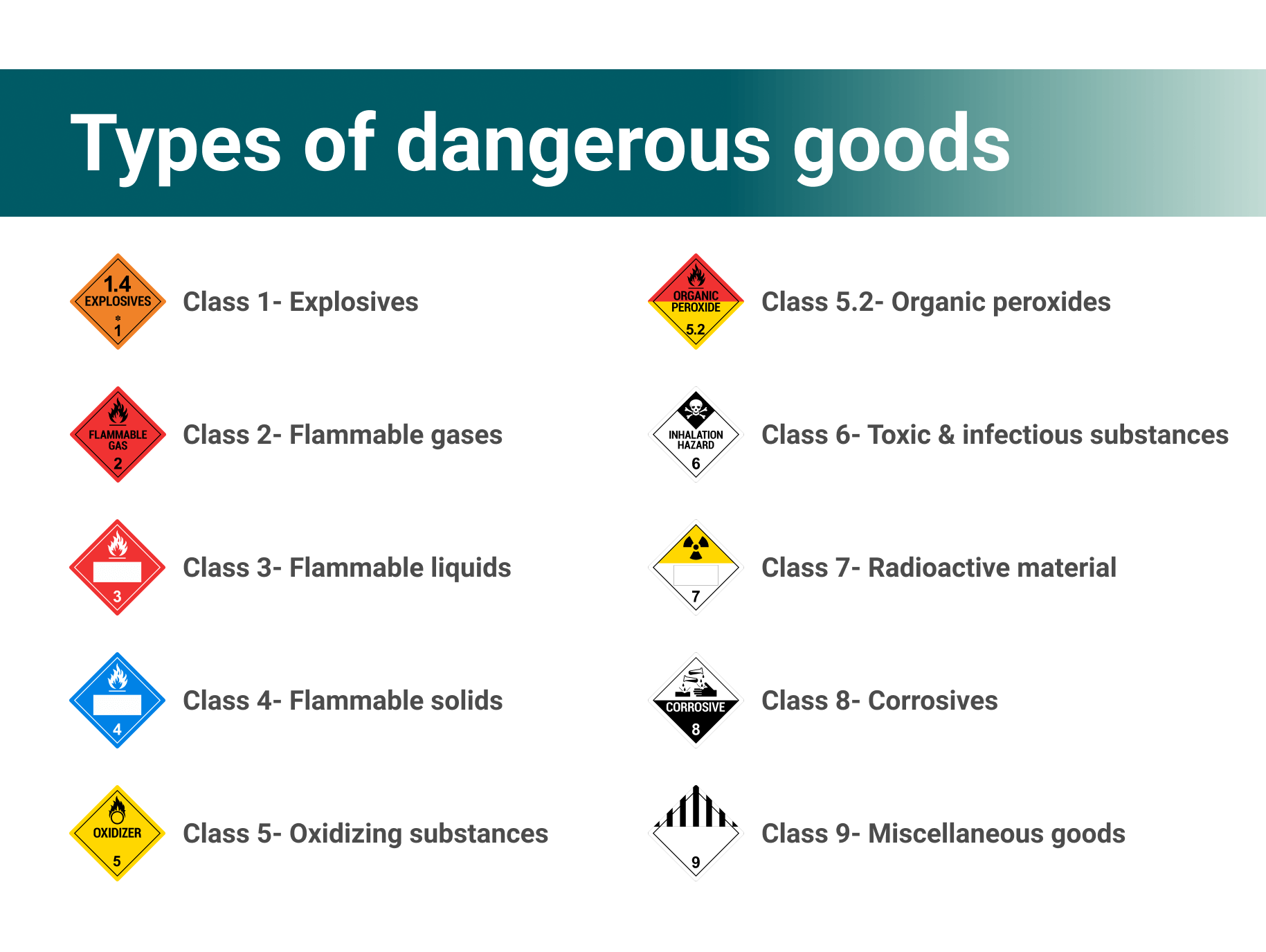
Individual carriers, nations, and organisations might have their own hazardous materials list. These lists may have variations in identifying items from the class of dangerous goods based on different criteria such as weight, volume, concentration, chemical composition, combustibility, etc.
Regardless of the variations, the UN-defined dangerous goods classification is upheld by most countries and international trade organisations. Aside from classification, you also need to consider the compatibility of dangerous goods for international shipping.
Dangerous Goods Segregation Chart
If you are shipping multiple hazardous materials together, you need to consider their compatibility with each other. Some of these items can create very terrible situations if they come in contact with one another. Check the dangerous goods compatibility chart below to understand how you need to separate these articles and substances.
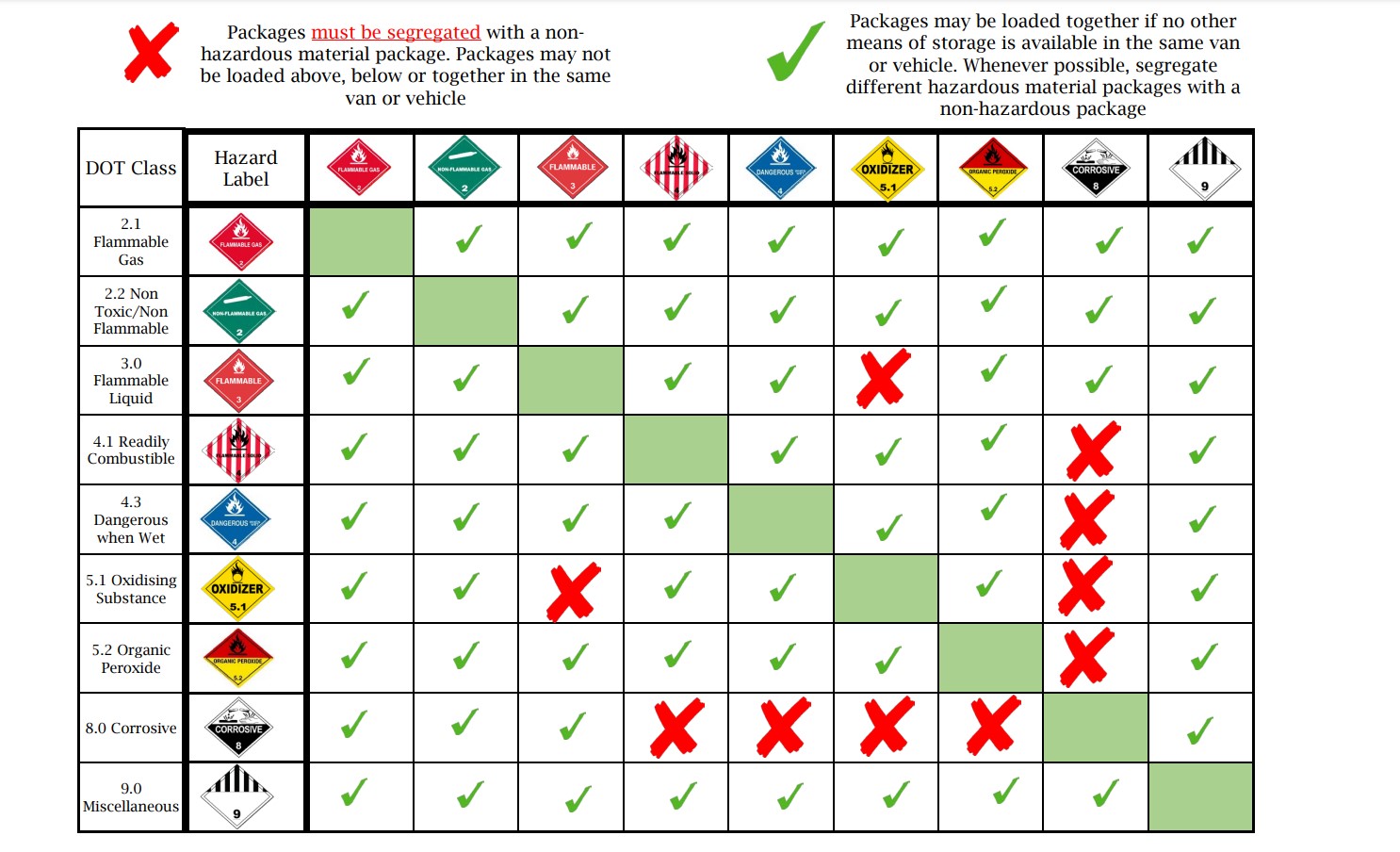
The dangerous goods segregation chart is a guideline for the storage and transportation of these items. You also need to consider the IMDG Code and DGR Manual to determine the precise measures to store different dangerous goods for shipping.
Requirements for Shipping Dangerous Goods and Hazardous Materials
Exporters, importers, and carriers must understand the necessary precautions and dangerous goods shipping regulations. These factors help all parties involved remain on the right side of the law and human safety. Below are some of the important factors to consider for dangerous goods shipping.
Dangerous Goods Packaging
If you are shipping dangerous goods internationally, you must follow the packaging requirements for the particular items. The packaging should be tested and certified by an authorised body such as the United Nations.
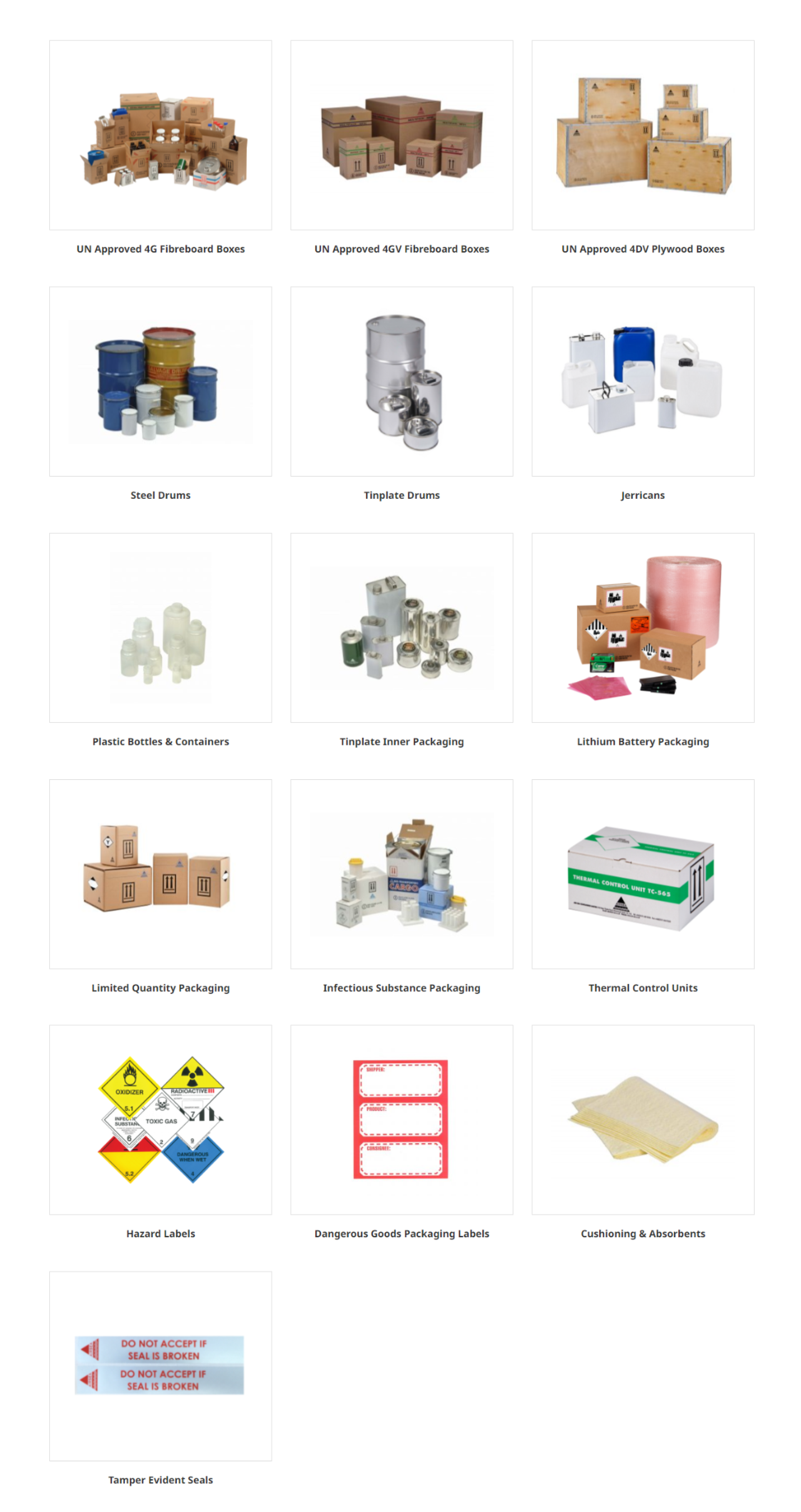
Here is a list of UN-approved dangerous goods packaging options. Aside from this, you also need to consider the packaging requirements for dangerous goods defined by individual carriers as well as importing/exporting countries.
Some classes of dangerous goods may require multiple layers of packaging depending on the mode of transport, quantity, handling requirements, and transport duration. You also need to be mindful of dangerous goods segregation when packaging them. You can refer to the dangerous goods compatibility chart in the previous section for guidance.
Dangerous Goods Label
One of the most crucial aspects of shipping hazardous materials is labelling. The label on the package is helpful for all the people who handle dangerous goods at various stages of transport such as shipping staff and customs officers. It informs them about the class of dangerous goods so that they can store, transport, and handle them accordingly.
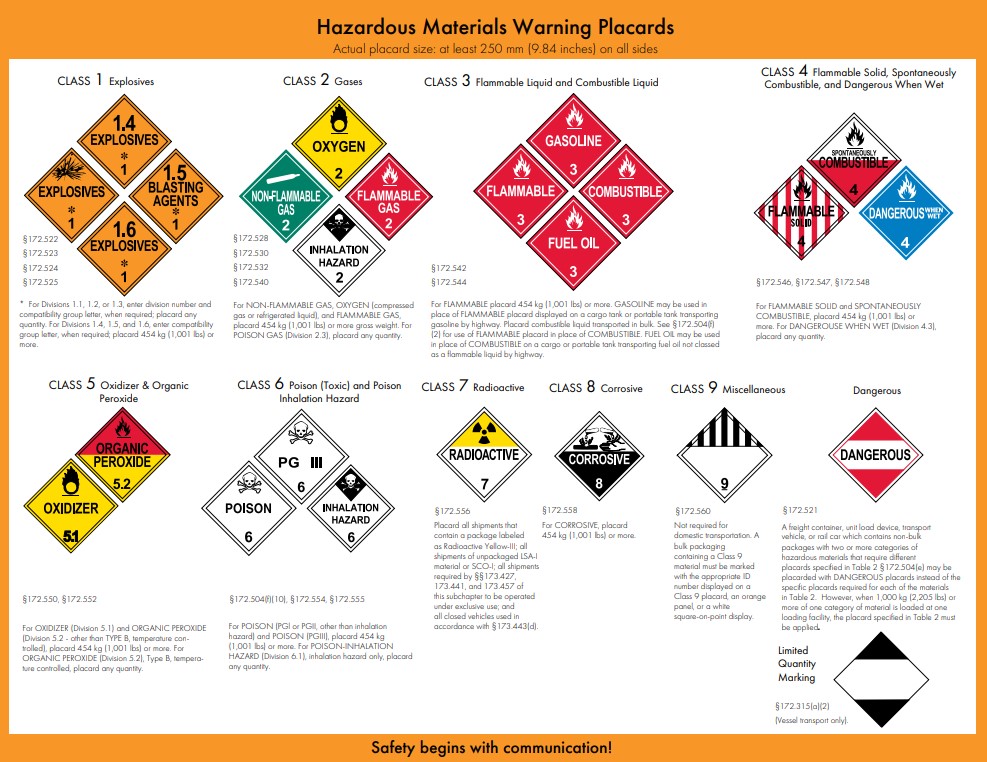
Along with warning markers, some classes of dangerous goods also need descriptive labels that define handling requirements, weight, caution warnings, package orientation and other relevant information. Some dangerous goods packaging also needs tamper-evident seals. In many cases, the hazmat label is required to include the shipper’s and recipient’s information.
The dangerous goods label should be printed on the package or durably affixed to it. The background of the dangerous goods shipping labels should sharply contrast the colour of the label. These labels hold great significance and hence should not be obscured by markings or grouped with other labels. Most importantly, the hazardous materials shipping labels should be placed on the package at a prominent position that offers maximum visibility.
Declaration of Dangerous Goods
If you are shipping dangerous goods internationally you must declare their presence in a consignment through relevant documents. These include Commercial Invoices, Cargo Reports, Air Waybill (for air freight), or Bill of Landing (for sea freight). Several carriers also require you to fill out a dangerous goods note for this purpose. This document asks for all the details concerning dangerous goods for shipping, storage, handling, and customs.
Customs Clearance Procedures
Almost all classes of dangerous goods need to meet specific conditions set by relevant government authorities for customs clearance. This is true for both the import and export sides of the customs.
First, you will need to check whether shipping dangerous goods is prohibited for import or export in a country. If a class of dangerous goods is not prohibited, you need to check the restrictions on the import and export of these items. And finally, you need to check for the customs requirements for shipping dangerous goods. These requirements can be in deference to quantity, packaging, labelling, handling, declarations, valuation, and so on.
You may also require special permits to import/export dangerous goods. These permits are necessary for the customs clearance process and have to be granted by relevant authorities. For instance, if you want to import hazardous materials into Australia you may need permits from ABF, DAFF, or DCCEEW depending on the dangerous goods classification.
If you fail to follow the necessary procedures for customs clearance of dangerous goods, you might be penalised with fines, legal actions, or imprisonment. So you should check all relevant legal requirements before shipping dangerous goods to or from any country.
Conclusion
Dangerous goods shipping is a matter of grave responsibility. You need to consider a variety of factors to safely execute the transport of these items and substances. You can refer to the IMDG Code and DGR Manual to learn more about shipping regulations concerning hazardous materials.
While PACK & SEND does not carry, nor perform other services regarding goods which in our sole opinion are dangerous goods, including, but not limited to, those specified in the International Air Transport Association (IATA) dangerous goods regulations. The "No Dangerous Goods" declaration on the PACK & SEND consignment note must be completed by the customer or the consignment will not be accepted.
PACK & SEND may at its discretion accept some dangerous goods for carriage (such as transport lithium batteries internationally) in certain circumstances. Your dangerous goods will only be accepted if they comply with the applicable regulations, codes and technical instructions and our requirements. Details of our requirements are available by contacting a PACK & SEND Service Centre.
Image sources: Container-Xchange, Montomery College, Air Sea Containers Ltd, FAA
